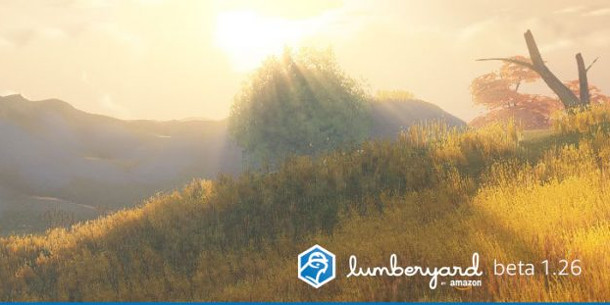Amazon ships Lumberyard 1.26

Amazon has released Lumberyard 1.26, the latest beta of the game engine and development environment, officially replacing the old CryPhysics system with the newer Nvidia PhysX system.
The release also adds support for dynamic slices to the terrain system, improves workflow for manipulating objects in the viewport, and updates the new White Box Tool and UI 2.0 interface design.
CryPhysics now officially replaced by Nvidia’s PhysX
The main change in Lumberyard 1.26 is that the old CryPhysics system – a holdover from original developer Crytek – has officially been replaced by the PhysX Gem, based on Nvidia’s real-time physics system.
All of CryPhysics’ features have now been superseded by those of PhysX, aside from the CryVehicles system, which will be removed entirely when CryPhysics is deprecated in a future release.
The PhysX gem itself gets three new joint constraints for fixed, ball and hinge joints.
In related news, the PhysX Force Regions system enables wind settings to be shared between Lumberyard cloth simulations and particle systems and other environmental effects.
Improved terrain and vegetation systems
The dynamic vegetation system introduced in Lumberyard 1.19 now supports dynamic slices, enabling users to create instances containing multiple terrain types – for example, rocks and sand – to speed up level layout.
In addition, Lumberyard’s old terrain code has now been grouped into a LegacyTerrain gem, making it possible for studios not using the legacy system to compile it out entirely.
The update also adds a PhysX-based Collider Surface Tag Emitter for distributing vegetation across surfaces.
According to Amazon, it provides a more efficient alternative to the old Mesh Surface Tag Emitter when working with more complex surfaces like rock faces.
Other changes: better viewport interactions, updates to UI 2.0 and the White Box Tool
Lumberyard’s viewport interaction model has also been updated, adding parent and local space grid snapping to make it easier to position assets. The camera controls also “now match industry standards”.
UI 2.0, the new interface design introduced in Lumberyard 1.25, continues to evolve, with changes including new icon designs, more use of dockable tabbed windows, and light and dark themes for the script console.
The other key change in Lumberyard 1.25, the new White Box Tool for level design tests, is now officially no longer an experimental feature, although since it’s still in preview, it isn’t ready for production use.
Availability and system requirements
Lumberyard 1.26 is available now. The editor runs on Windows 7 and above.
The engine is free to use for developing offline and local multiplayer games, including source code access; online games must use Amazon Web Services, charged at Amazon’s standard AWS rates.
Read a full list of new features in Lumberyard 1.26 in the online release notes
